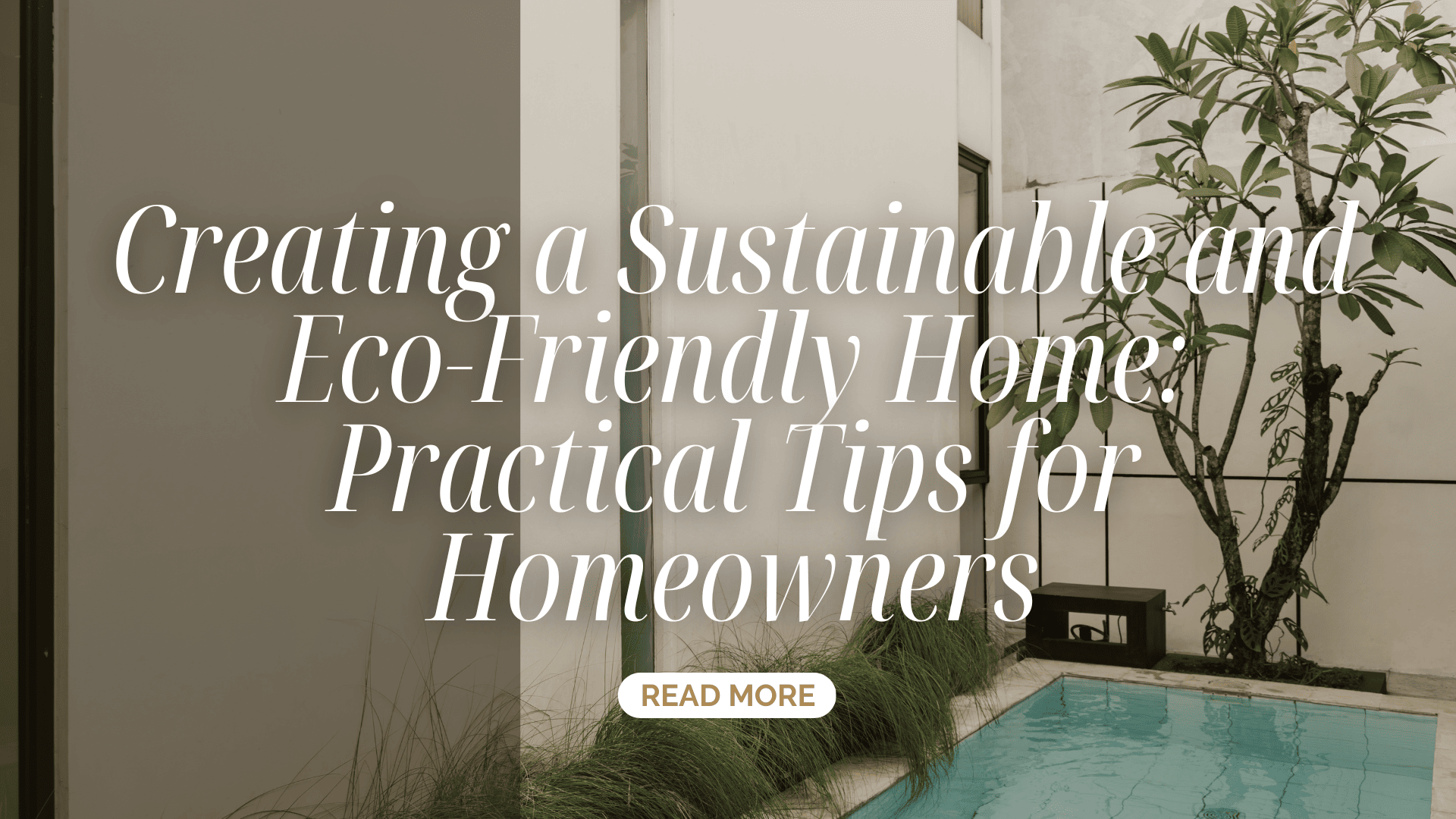
07 Mar Creating a Sustainable and Eco-Friendly Home: Practical Tips for Homeowners
In an era of heightened environmental awareness, many homeowners are seeking ways to reduce their carbon footprint and create more sustainable living spaces. From energy-efficient upgrades to eco-friendly design principles, there are numerous strategies for transforming your home into a sustainable haven.
1. Energy-Efficient Lighting:
Replace traditional incandescent light bulbs with energy-efficient LED or compact fluorescent (CFL) bulbs. These alternatives consume less energy, last longer, and emit less heat, reducing both energy costs and environmental impact.
2. Efficient Appliances:
Upgrade to Energy Star-certified appliances, such as refrigerators, washing machines, and dishwashers, which are designed to minimize energy consumption and water usage. Look for appliances with high energy efficiency ratings to maximize savings and sustainability.
3. Smart Thermostat:
Install a programmable or smart thermostat to optimize heating and cooling systems for energy efficiency. Programmable thermostats allow you to schedule temperature settings based on your daily routine, while smart thermostats can learn your preferences and adjust settings automatically.
4. Renewable Energy Sources:
Consider investing in renewable energy sources such as solar panels or wind turbines to generate clean and sustainable energy for your home. Depending on your location and property characteristics, renewable energy systems can significantly reduce reliance on traditional power sources and lower utility bills over time.
5. Water Conservation:
Implement water-saving fixtures and appliances, such as low-flow faucets, showerheads, and toilets, to reduce water consumption and minimize water waste. Collect rainwater for outdoor irrigation or invest in greywater recycling systems to reuse water from sinks, showers, and laundry for non-potable purposes.
6. Sustainable Materials:
Choose eco-friendly building materials and finishes for home renovations and construction projects. Opt for sustainable options such as bamboo flooring, reclaimed wood, recycled glass countertops, and low-VOC (volatile organic compound) paints to minimize environmental impact and promote indoor air quality.
7. Efficient Insulation and Windows:
Improve insulation in your home to reduce heating and cooling energy losses. Upgrade to energy-efficient windows with double or triple-pane glazing and low-emissivity coatings to enhance thermal performance and minimize heat transfer.
8. Native Landscaping and Gardening:
Design your outdoor space with native plants, drought-tolerant landscaping, and water-efficient irrigation systems to minimize water usage and support local biodiversity. Incorporate composting and organic gardening practices to reduce waste and promote soil health.
9. Waste Reduction and Recycling:
Practice waste reduction and recycling by composting organic waste, using reusable shopping bags and containers, and minimizing single-use plastics and packaging. Educate yourself and your family about proper recycling practices to maximize diversion from landfills.
10. Sustainable Lifestyle Choices:
Adopt eco-friendly lifestyle habits such as reducing energy consumption, conserving water, minimizing waste, and supporting sustainable products and businesses. Encourage sustainable transportation options such as biking, walking, carpooling, or using public transit to reduce carbon emissions.
You may make your house and way of life more environmentally friendly for the benefit of the earth and future generations by implementing these sustainable practices. Together, we can contribute to a future for our communities and the environment that is more resilient and sustainable. Small adjustments can have a tremendous impact.

